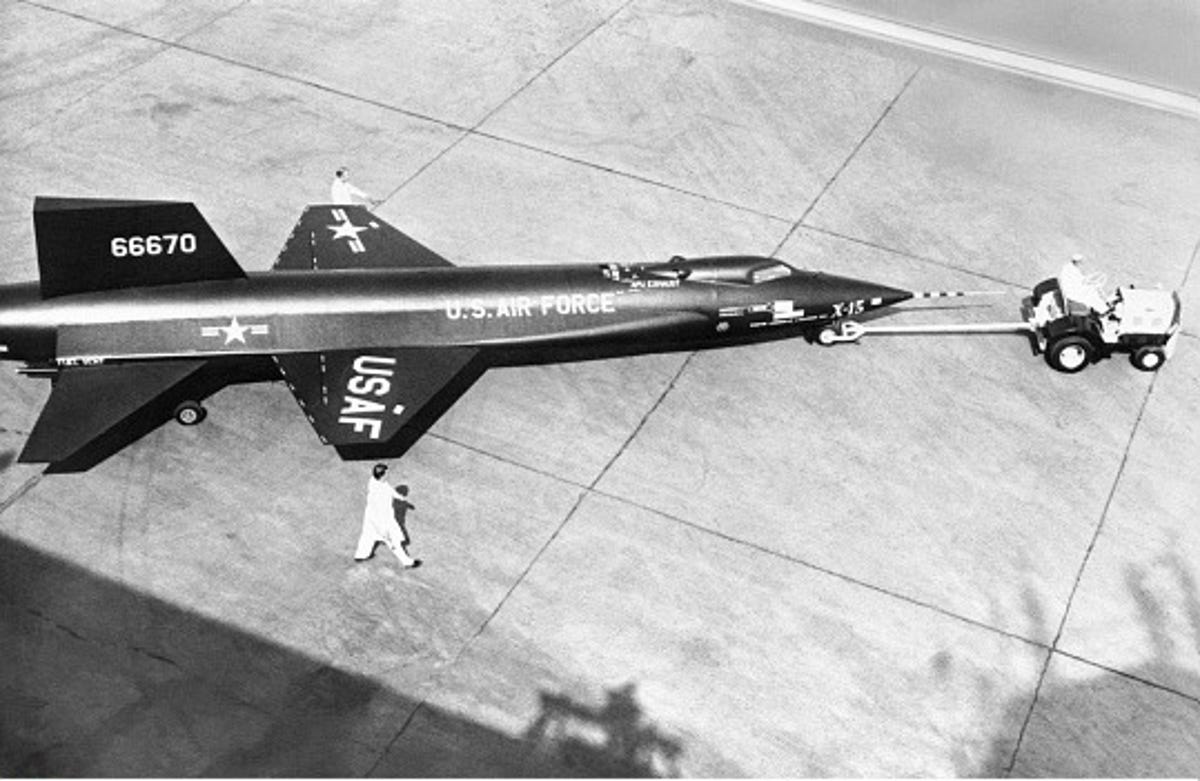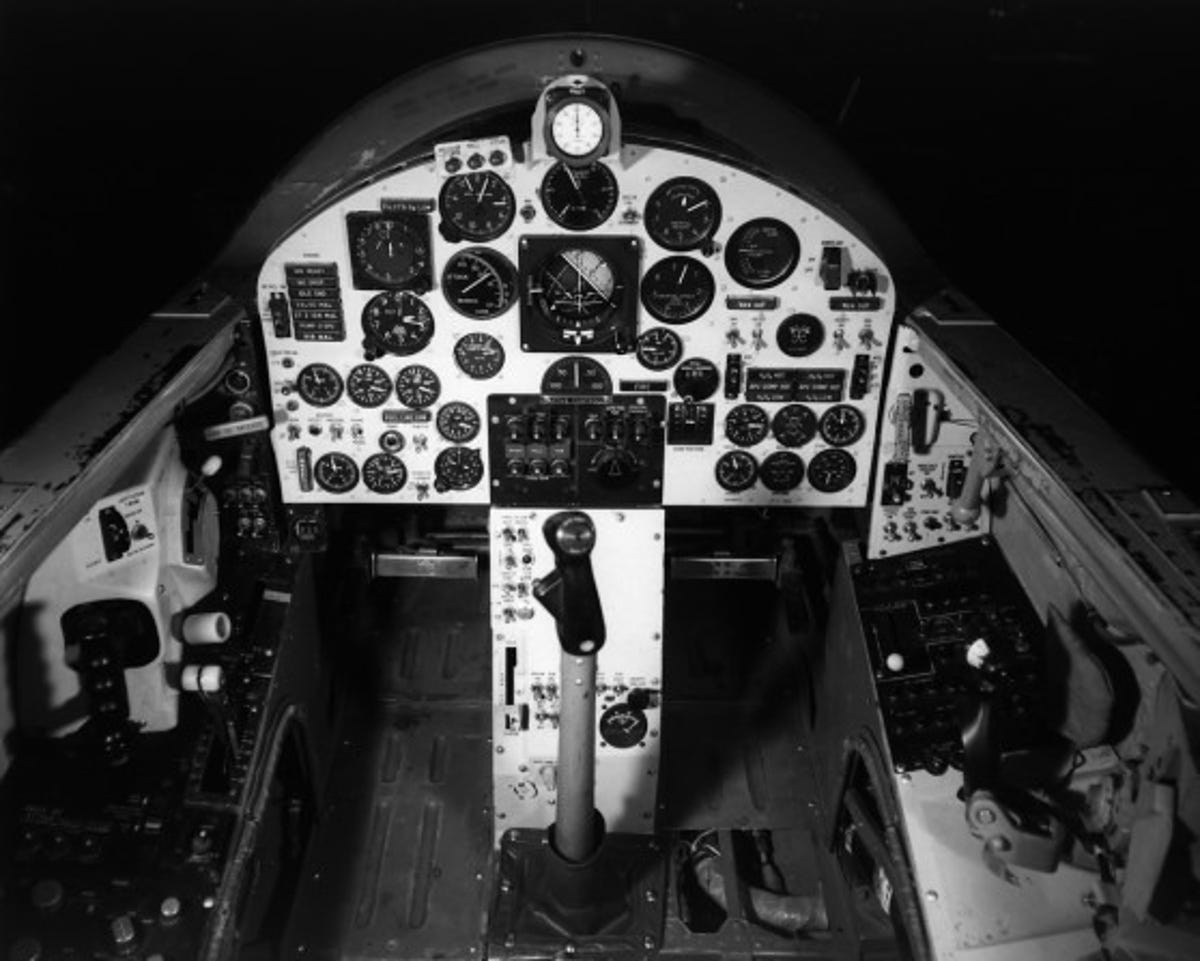Photos: Looking back at NASA's X-15 aircraft
The rocket-powered aircraft first flew in June 1959, helping set the stage for space missions including Apollo and the shuttle.

X-15 on the tarmac
In this slideshow, we'll take a look at the X-15 rocket plane, which first flew 50 years ago this week and which NASA calls "the most successful research aircraft ever built." This image shows the X-15-1 aircraft in 1958, at which point the XLR-99 rocket engine intended for it was not ready, so it was fitted with a pair of older XLR-11 engines, like the one used in the earlier X-1.
X-15 mated to B-52
Detaching from B-52
The inaugural flight in June 1959 was a completely unpowered glide flight intended to check out the handling of the X-15. The second flight, which took place in September of that year, was the first in which the X-15 was powered.
Rocket engine ignites
Ablative coating
Correction, 11:34 a.m. PDT: This caption initially gave an incorrect description of the underside of the X-15.
X-15 in white
Cutaway diagram
B-52 flyover
Scott Crossfield
Neil Armstrong


